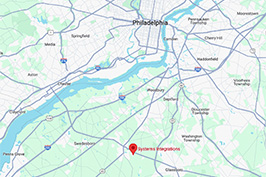Navigating the Risks: The Implications of Using Non-NDAA Approved Dahua & Hikvision Security Cameras
In today’s technologically driven world, ensuring the security of critical infrastructure and sensitive environments has become paramount for businesses and government entities alike. The deployment of advanced security cameras plays a crucial role in safeguarding assets and premises. However, the use of non-NDAA (National Defense Authorization Act) approved security cameras, specifically from manufacturers like Dahua and Hikvision, presents a set of risks and challenges that organizations need to be aware of. This blog post delves into the implications of using these non-NDAA approved devices and underscores the importance of adhering to compliant security solutions.
Understanding NDAA Compliance
The NDAA is a United States federal law that, among other things, outlines the defense expenditures for the fiscal year. Included within the NDAA for FY 2019 (Section 889) is a prohibition on the U.S. government’s use of telecommunications and video surveillance services and equipment from certain Chinese companies deemed a security risk, notably Dahua and Hikvision. This ban extends to any essential or critical components of systems that would be utilized within sensitive contexts, impacting federal agencies and, by extension, contractors and grant recipients who work closely with the U.S. government.
Risks Associated with Non-NDAA Approved Cameras
- Security Vulnerabilities: Non-NDAA approved cameras from Dahua and Hikvision have been identified as having potential security vulnerabilities that could be exploited by malicious actors. These vulnerabilities may allow unauthorized access to video feeds, enabling espionage or sabotage activities. For organizations that handle sensitive information or are involved in national security, using such equipment could pose significant risks.
- Compliance and Legal Repercussions: For entities engaged in contracts with the U.S. government, the use of banned equipment can lead to severe legal and financial consequences. This includes the potential for contract termination, fines, and loss of future government business opportunities. Compliance with NDAA regulations is not only a matter of legal obligation but also a testament to an organization’s commitment to national security.
- Reputational Damage: Employing non-NDAA approved technology could tarnish an organization’s reputation, especially if a security breach occurs. Stakeholders, including customers, partners, and the public, may view the use of such equipment as negligent or indicative of a disregard for security concerns, which can erode trust and confidence.
- Operational Risks: The integration of non-compliant cameras into a security network can introduce operational inefficiencies and challenges. For example, compatibility issues with other security systems may arise, leading to gaps in surveillance coverage or difficulties in managing and monitoring video feeds effectively.
Mitigating the Risks
To mitigate these risks, organizations should take proactive steps to ensure compliance with NDAA regulations and secure their operations:
- Conduct a Thorough Inventory: Assess current security systems to identify and replace any non-NDAA compliant equipment.
- Choose NDAA Approved Alternatives: Opt for security cameras and surveillance equipment that are explicitly approved under NDAA guidelines, ensuring they do not pose the same security vulnerabilities.
- Partner with Trusted Vendors: Work with reputable suppliers who understand the importance of compliance and can provide guidance on selecting appropriate security solutions.
- Stay Informed: Keep abreast of updates to legislation and industry standards related to security equipment to ensure ongoing compliance.
In conclusion, while the initial cost and functionality of Dahua and Hikvision non-NDAA approved cameras may appear attractive, the long-term risks and implications of using such equipment cannot be overlooked. By prioritizing compliance and security, organizations can protect themselves against potential vulnerabilities and uphold their reputation as responsible and secure entities. As the landscape of cybersecurity and national defense evolves, adhering to NDAA guidelines remains a critical consideration for any entity invested in maintaining robust and reliable security operations.


